1. Monarch Butterflies

The iconic monarch butterfly migration spans up to 4,000 of kilometers from Canada to Mexico, with generations traversing the same route. However, their remarkable journey is imperiled by habitat loss due to urbanization and agriculture, pesticide use, particularly herbicides and insecticides, and climate change, which disrupts temperature and precipitation patterns. These threats have contributed to a significant decline in monarch populations. Source: iucn.org
2. Arctic Tern
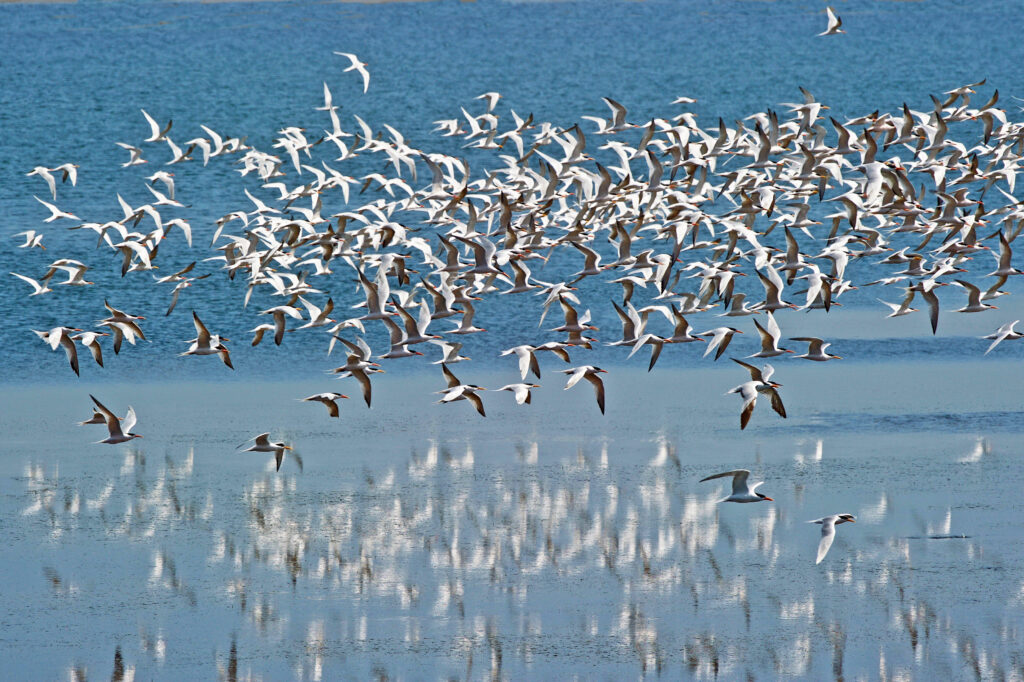
The Arctic Tern holds the record for the longest migration, traveling from the Arctic to the Antarctic and back each year. This incredible journey spans over 40,000 kilometers, exposing the bird to various climates and ecosystems. However, climate change is altering the availability of food along its route, threatening this remarkable voyage. Source: medium.com
3. Wildebeest
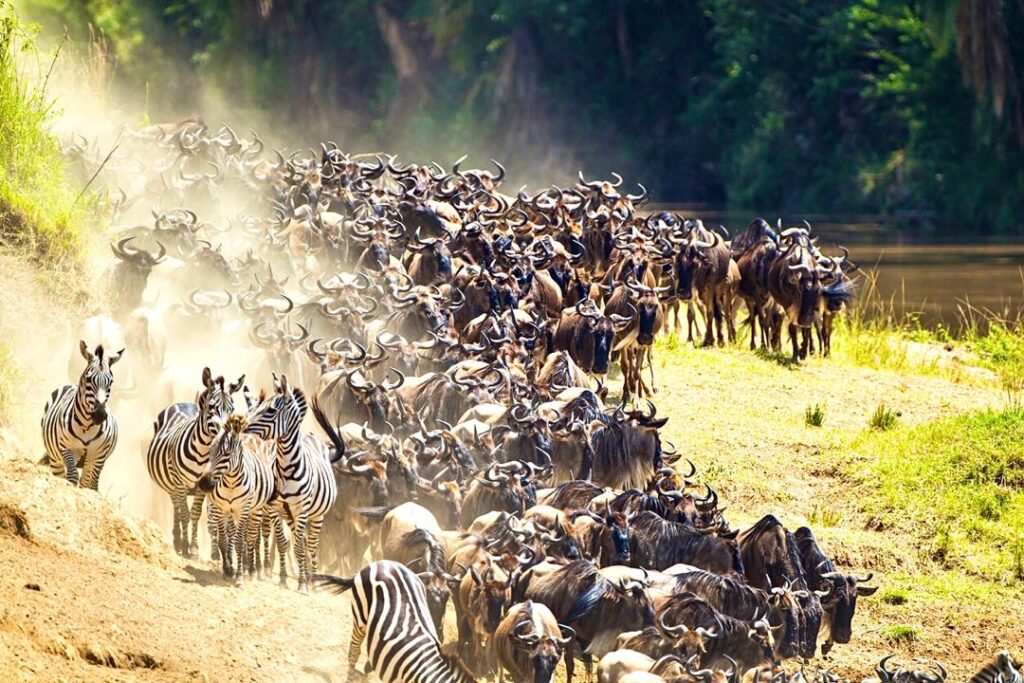
The Great Migration of over a million wildebeests, accompanied by zebras and gazelles, traverses Tanzania’s Serengeti and Kenya’s Maasai Mara in search of greener pastures. However, human activities like fencing, agriculture, and urbanization fragment habitats and block migration routes. Climate change also alters rainfall patterns, impacting grazing lands. These disruptions threaten the ecosystem’s balance, affecting predator-prey dynamics and biodiversity. Source: adventureworld.com
4. Humpback Whales
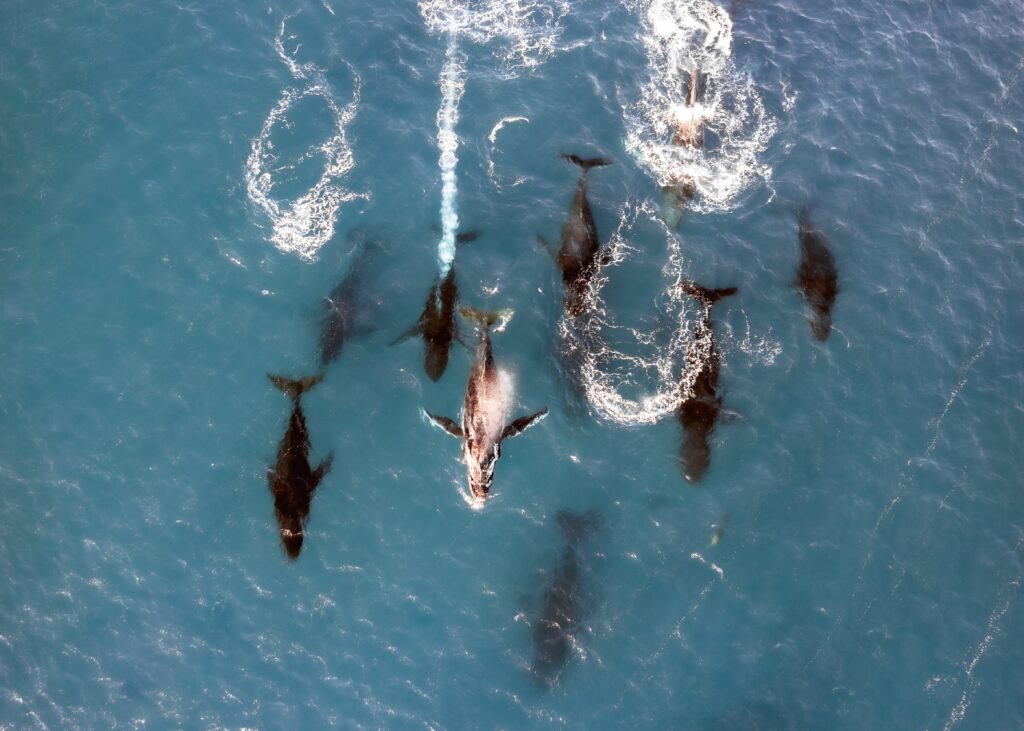
Humpback whales migrate thousands of kilometers annually between polar feeding grounds and tropical breeding grounds. These majestic creatures face significant threats from ship strikes, noise pollution from shipping and seismic activities, and climate change, which alters krill populations and ocean temperatures. Entanglement in fishing gear and hunting also pose risks. Source: fisheries.noaa.gov
5. Caribou
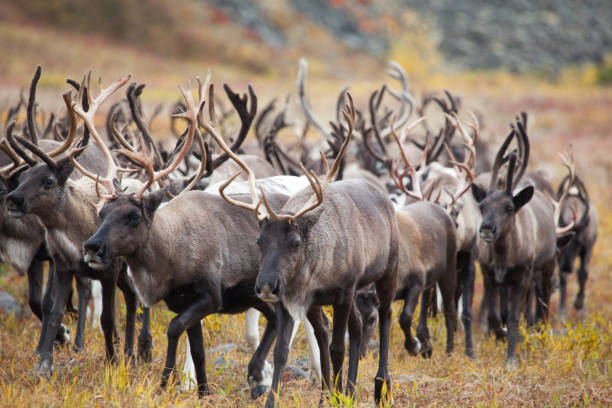
Caribou, also known as reindeer, undertake extensive migrations across the Arctic tundra, crucial for their survival. However, industrial development, such as oil and gas extraction, mining, and infrastructure projects, fragments habitats and disrupts migration routes. Climate change alters vegetation patterns, food availability, and predator dynamics, further threatening populations. Source: arctic.wwf.org
6. Bar-tailed Godwits
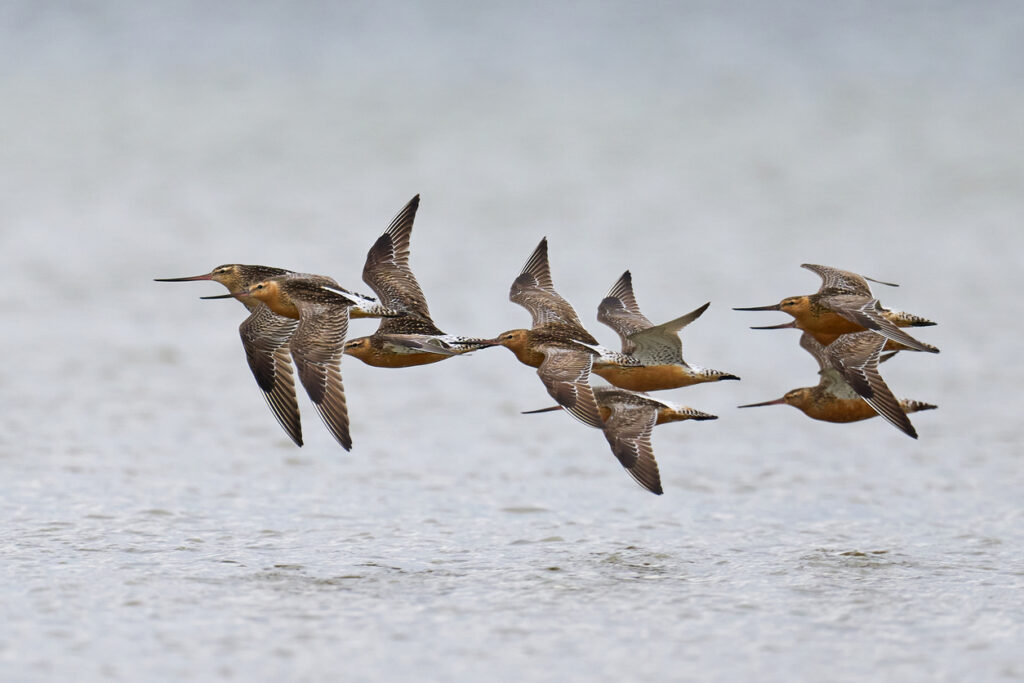
These birds are known for their exceptionally long, non-stop migrations between Alaska and New Zealand. This journey, covering approximately 11,000 kilometers (6,835 miles), is one of the longest continuous migrations for any bird. Unfortunately, habitat loss and climate change are threatening their stopover sites, crucial for rest and refueling.
7. European Eels
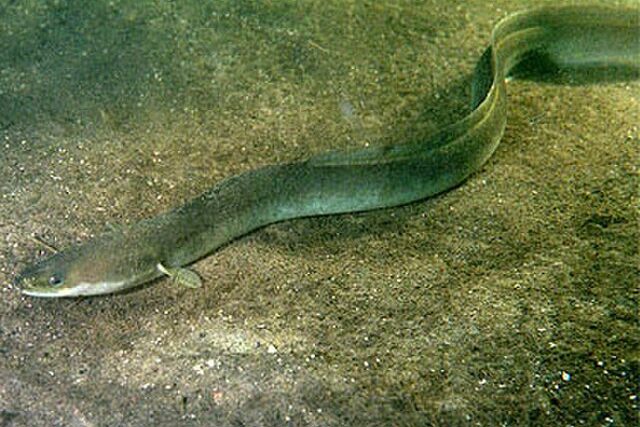
European eels migrate over 5,000 – 6,000 kilometers from European rivers to the Sargasso Sea to spawn, a remarkable journey threatened by human activities. Dams and water barriers block their migration routes, while pollution and habitat degradation reduce their survival rates. Overfishing and poaching further deplete populations.
8. Straw-colored Fruit Bats
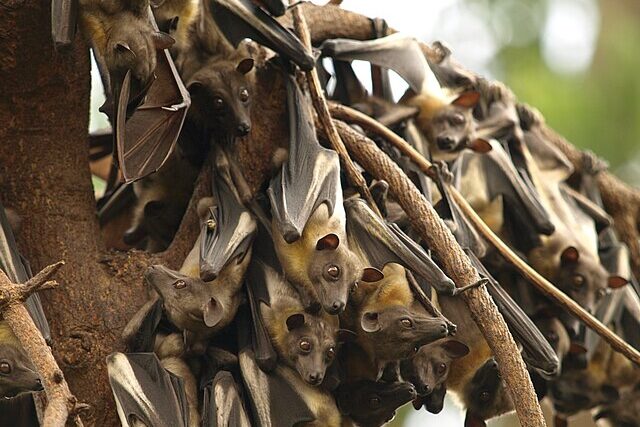
Straw-coloured fruit bats are one of the species crucial for reforesting African woodlands. They migrate across the continent in search of fruiting trees, and their long-distance migrations, sometimes spanning up to 95km, are vital for seed dispersal and ecosystem health. However, deforestation and hunting pose significant threats to their populations and migration patterns, potentially leading to their decline.
9. Pacific Salmon
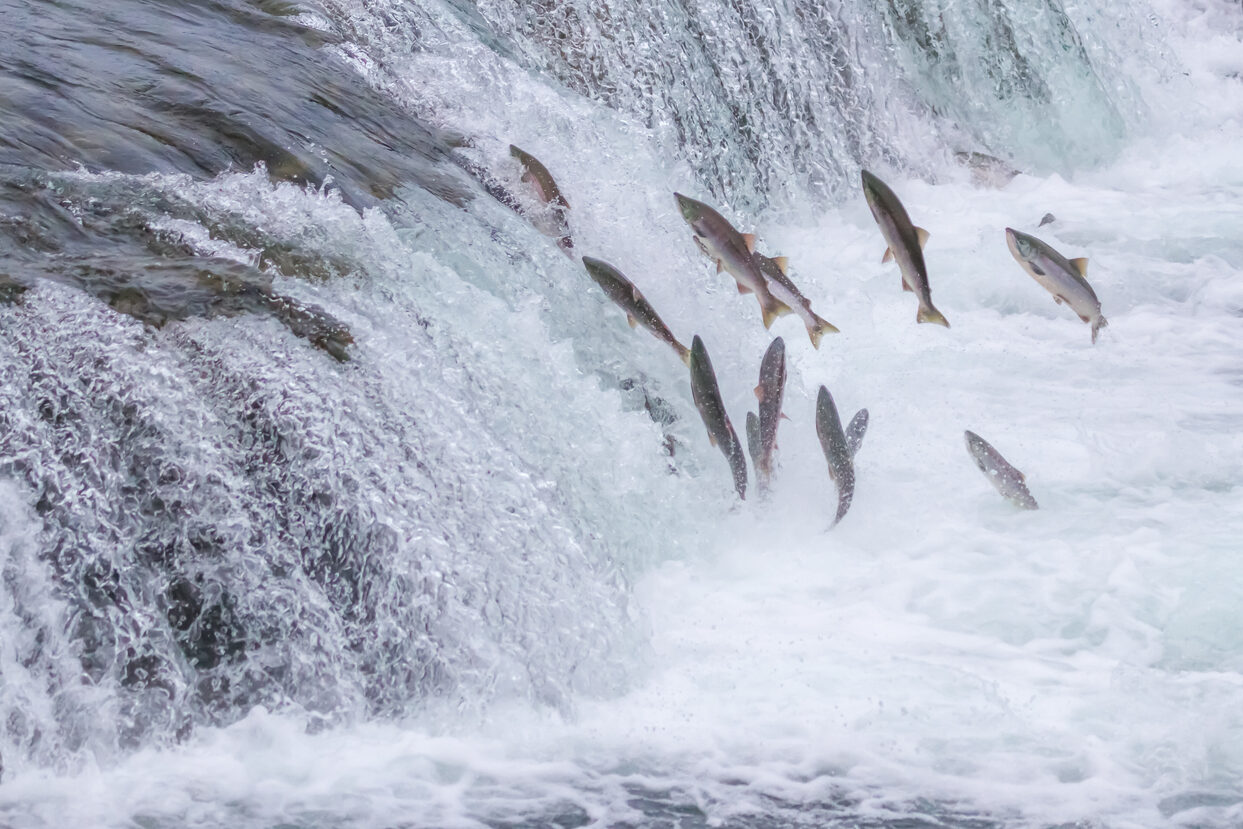
Pacific Salmon undertake impressive migrations from the ocean to their natal freshwater rivers to spawn, driven by innate navigation. However, human activities disrupt their journey: dams block passage, pollution degrades habitats, and climate change alters water temperatures and flow patterns. These obstacles contribute to significant population declines, reduced genetic diversity, and ecosystem impacts.
10. Painted Lady Butterflies
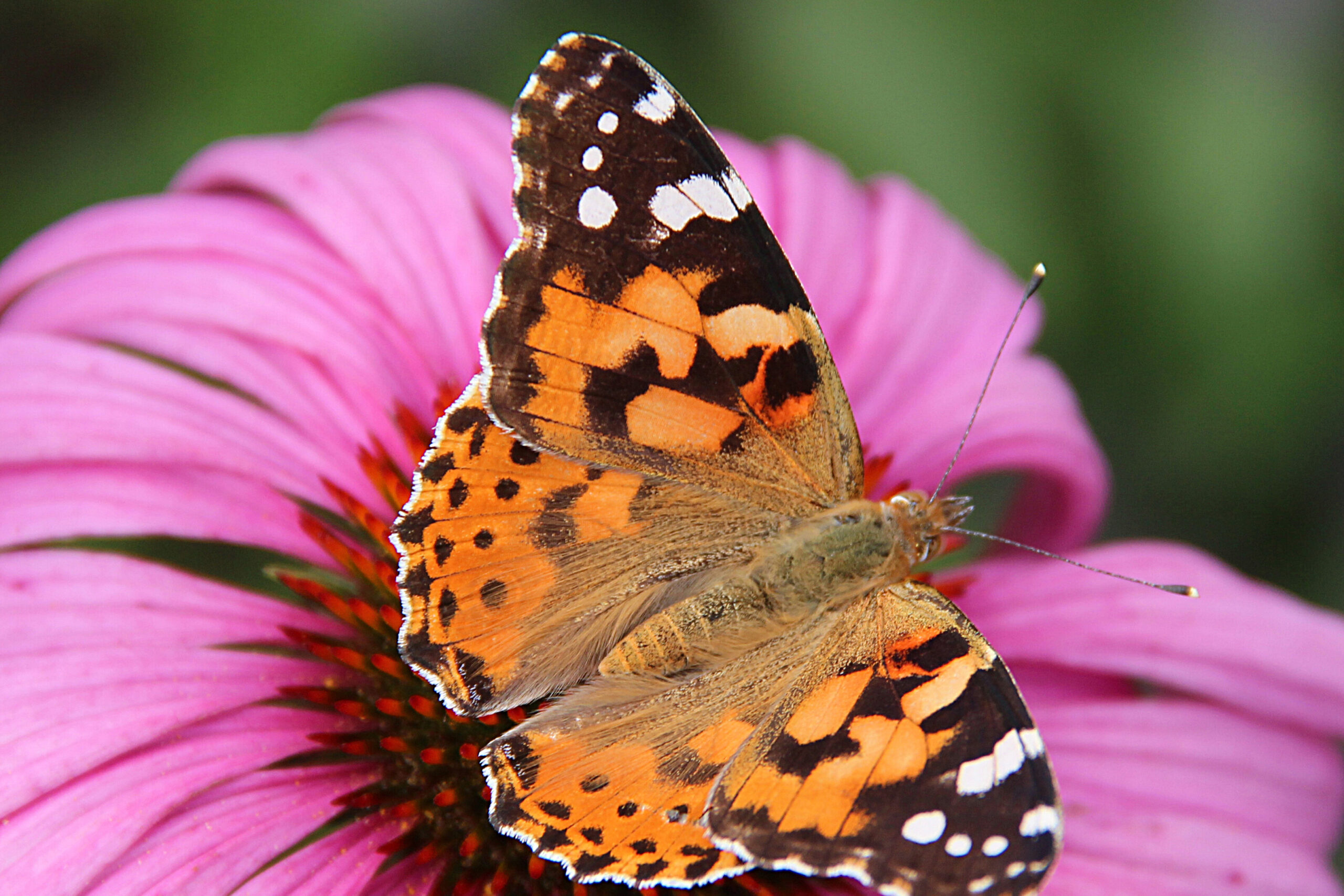
The painted lady butterfly is known for its remarkable long-distance migrations of 9300 miles across continents. But, these journeys are increasingly threatened by habitat loss and climate change, impacting their ability to complete their migration cycles and survive.
11. Leatherback Sea Turtles
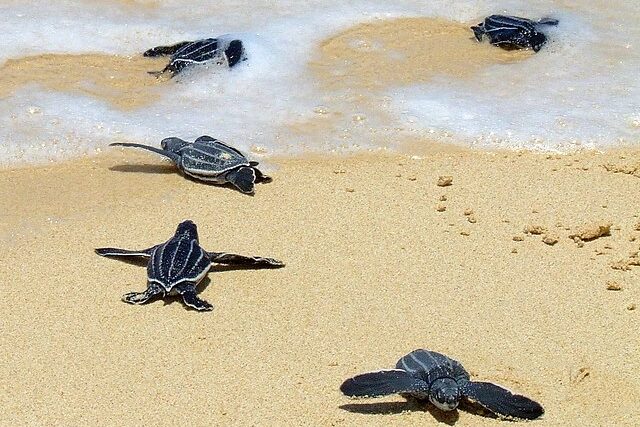
Leatherback sea turtles migrate thousands of kilometers across oceans to reach their preferred nesting beaches. These journeys are threatened by entanglement in fishing gear, ingestion of plastic pollution, and climate change, which alters sand temperatures, impacting hatchling sex ratios and nesting site viability. Rising sea levels and increased storm frequency also erode nesting beaches, altogether negatively impacting their populations and leading to significant declines in some areas.
12. Saiga Antelope
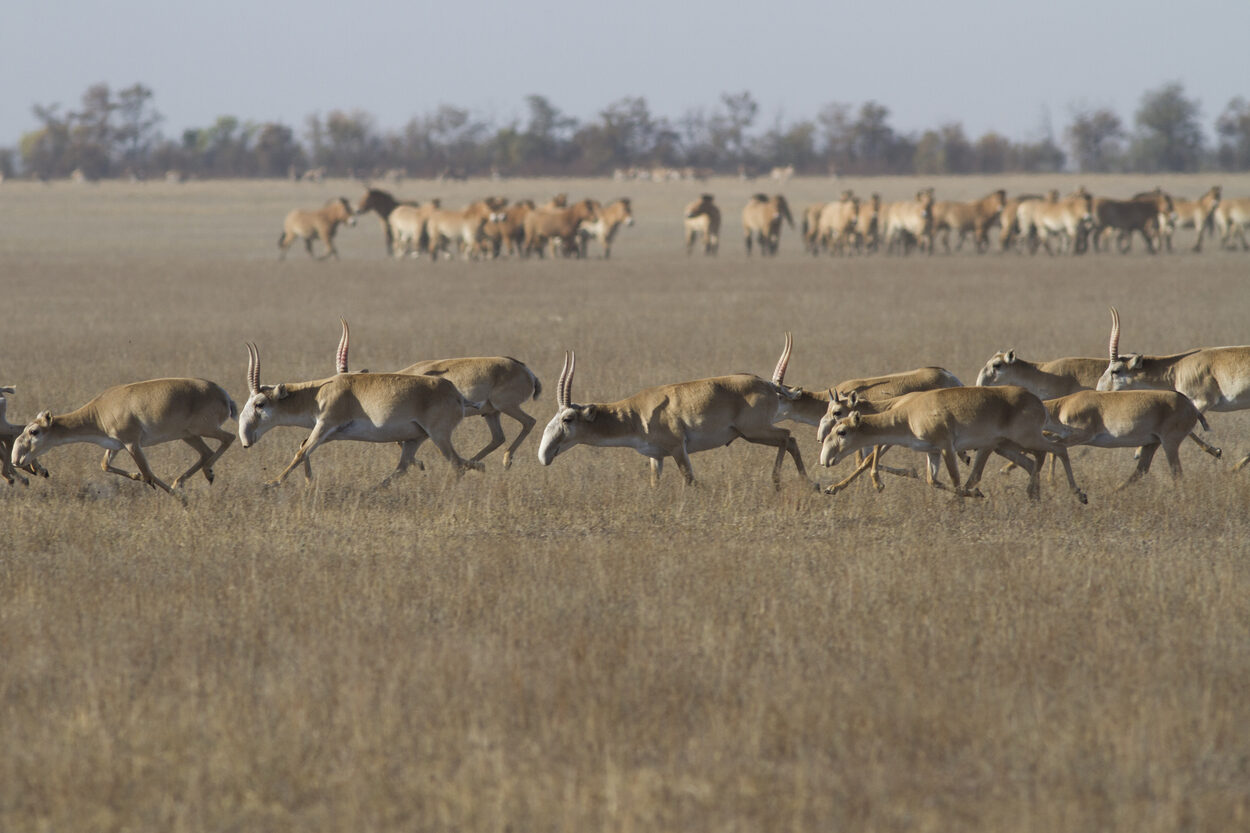
Saiga antelopes, known for their long-distance migrations across Central Asian steppes, are facing a severe decline in population due to poaching, disease, and habitat loss. Poaching, particularly for their horns and meat, continues to be a significant threat. Additionally, disease outbreaks, like the mass die-off in 2015 caused by Pasteurella multocida, have decimated populations. Habitat loss due to human activities like industrial projects and infrastructure development further reduces the space available for saiga to migrate and find food.
13. Northern Bald Ibis
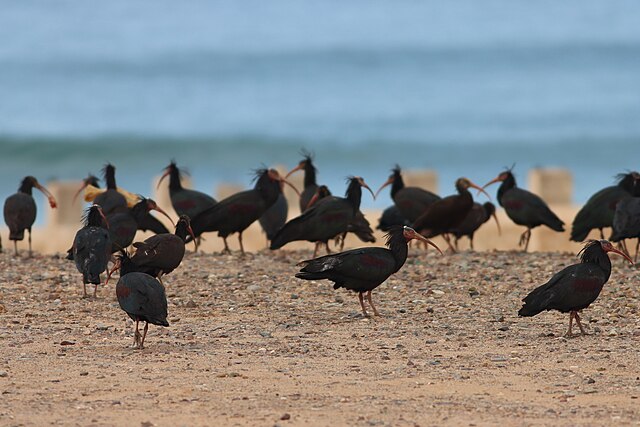
The Northern Bald Ibis, once widespread across the Middle East, North Africa, and Europe, now have to migrate along limited routes due to factors such as Habitat loss, hunting, and pesticide poisoning, which have drastically reduced their once large populations. Presently, The species has been driven to near extinction, with only a few remnant populations remaining.
14. Red Knot
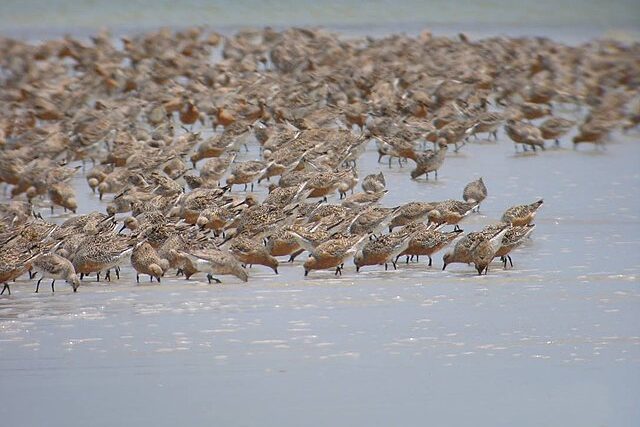
Red Knots, a migratory shorebird, are heavily reliant on stopover sites along coastlines to refuel during their long journeys.However, coastal development and climate change pose significant threats to these crucial habitats, potentially impacting Red Knot populations.
15. Pronghorn Antelope
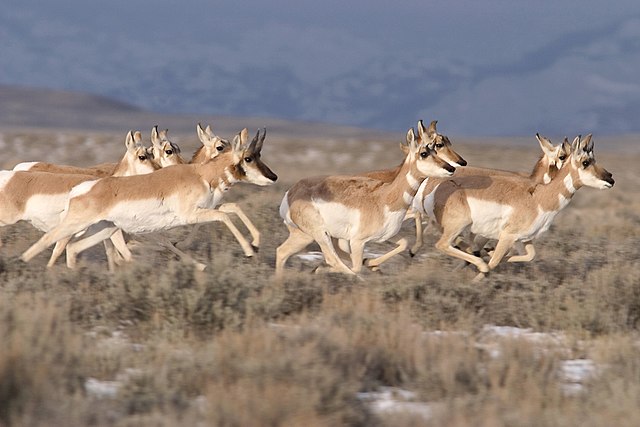
Pronghorns, North America’s only native antelope, migrate across grasslands and shrub-steppes. But now, they are faced with obstacles like fencing and rapid urban development that disrupt their traditional routes. These obstacles now force them to change their migration patterns, expend more energy, and potentially increase their risk of mortality.
16. Atlantic Bluefin Tuna
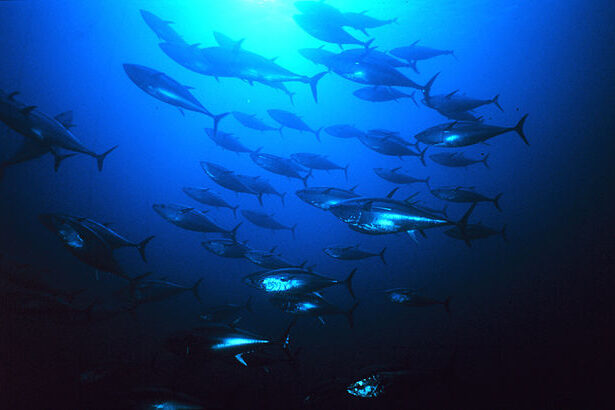
The atlantic bluefin tuna fish migrate across the Atlantic Ocean in distinct migration patterns; the western bluefin tuna in the US migrate from foraging its grounds to the Gulf of Mexico to spawn in April-June, and then, returning to feeding grounds during the summer. But the Eastern bluefin tuna migrate to the Mediterranean Sea to spawn in May-June and then back to the North Atlantic. Unfortunately, Overfishing, fising ocean temperatures and changes in ocean currents due to climate change have been major contributors to the decline of bluefin tuna populations.
17. Sandhill Cranes
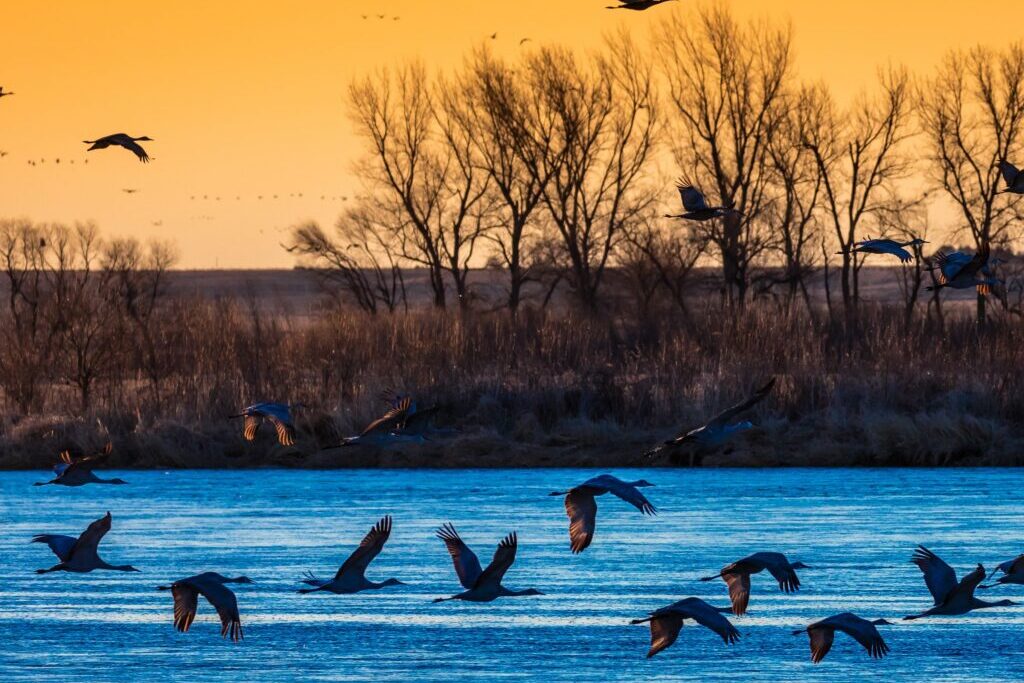
Sandhill Cranes undertake a remarkable annual migration across North America, traveling thousands of kilometers from their wintering grounds in Mexico and the southwestern US to their breeding grounds in Canada. A major stopover point on this journey is Nebraska’s Platte River, where they congregate in large numbers to rest and feed. But they also face major threats including wetland loss and development, habitat fragmentation, and climate change, which alter food availability and migration patterns.
18. Arctic Fox
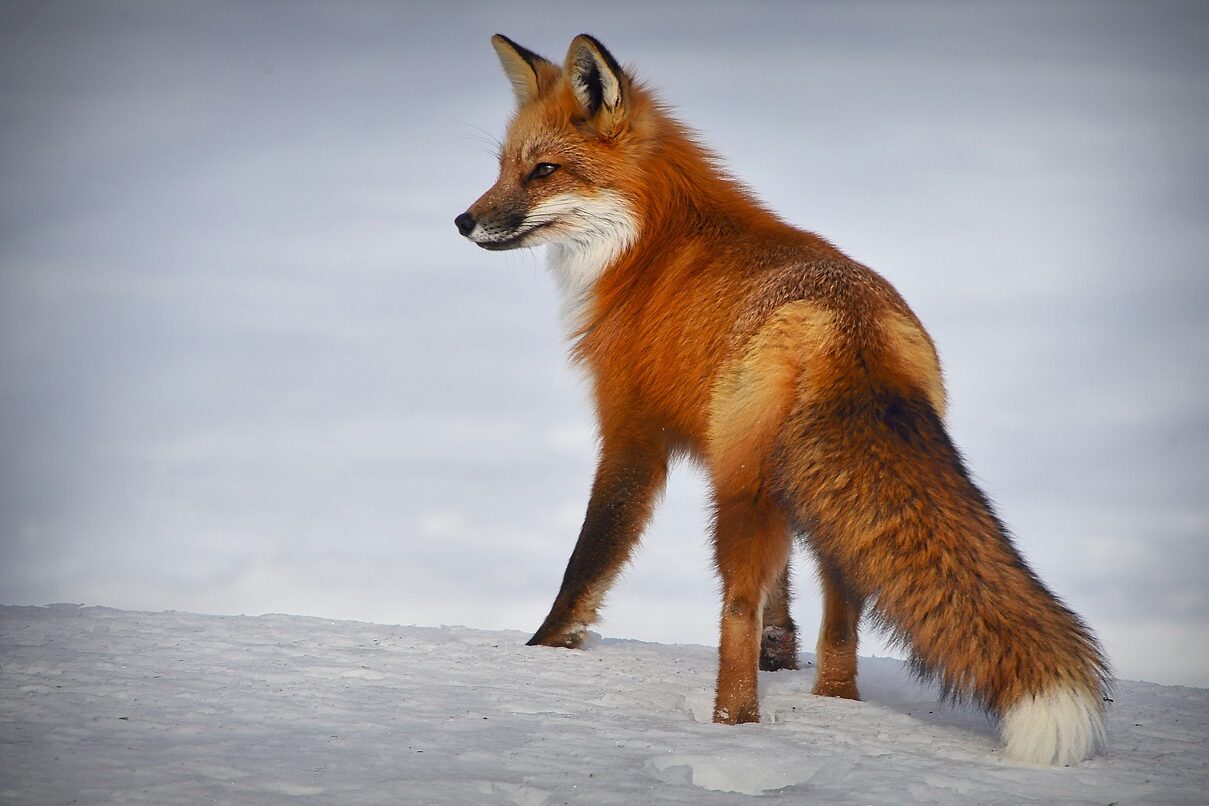
Arctic foxes migrate in response to food availability; Arctic fox populations are directly impacted by the changes in their food sources caused by climate change, leading to shifts in their migration patterns and population dynamics. Climate change alters the availability and distribution of their main prey, like lemmings, birds, and reindeer, which, in turn, forces foxes to adapt their feeding habits and potentially migrate to new areas with more food resources.
19. Blackpoll Warblers
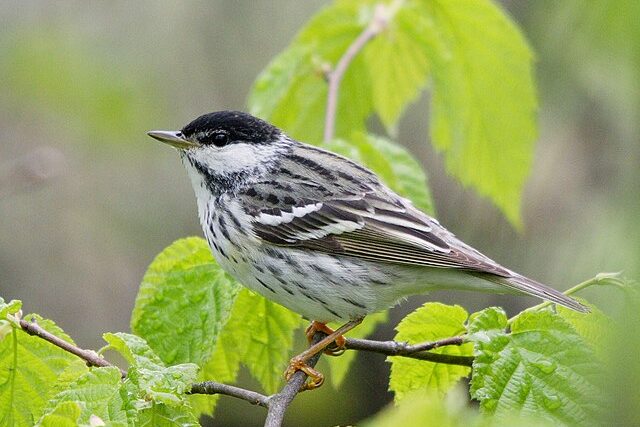
Blackpoll Warblers, are small songbirds, face serious threats due to their long-distance migration and habitat loss. They undertake a significant migration from North America to South America and back, and habitat loss in both locations, along with climate change, poses a significant risk to their populations.
20. Green Sea Turtles
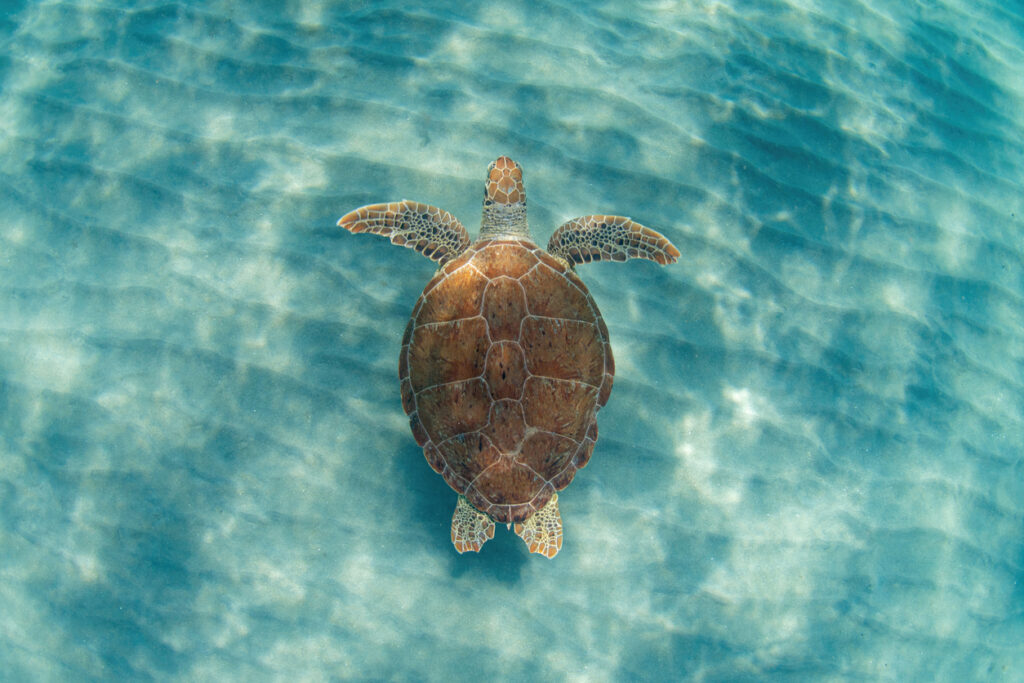
Green sea turtles migrate between feeding and nesting grounds, and both coastal development and climate change are significantly impacting their nesting beaches. Coastal development can lead to loss of nesting habitat, while climate change causes rising sea levels, shifts in ocean currents, and increased storm frequency, all of which threaten nesting beaches.
21. Snow Geese

Snow geese migrate thousands of kilometers between Arctic breeding grounds and southern wintering areas in North America. They are also affected by habitat loss, climate change, and shifting agricultural practices that impact their migratory routes and stopover sites.
22. Atlantic Puffins
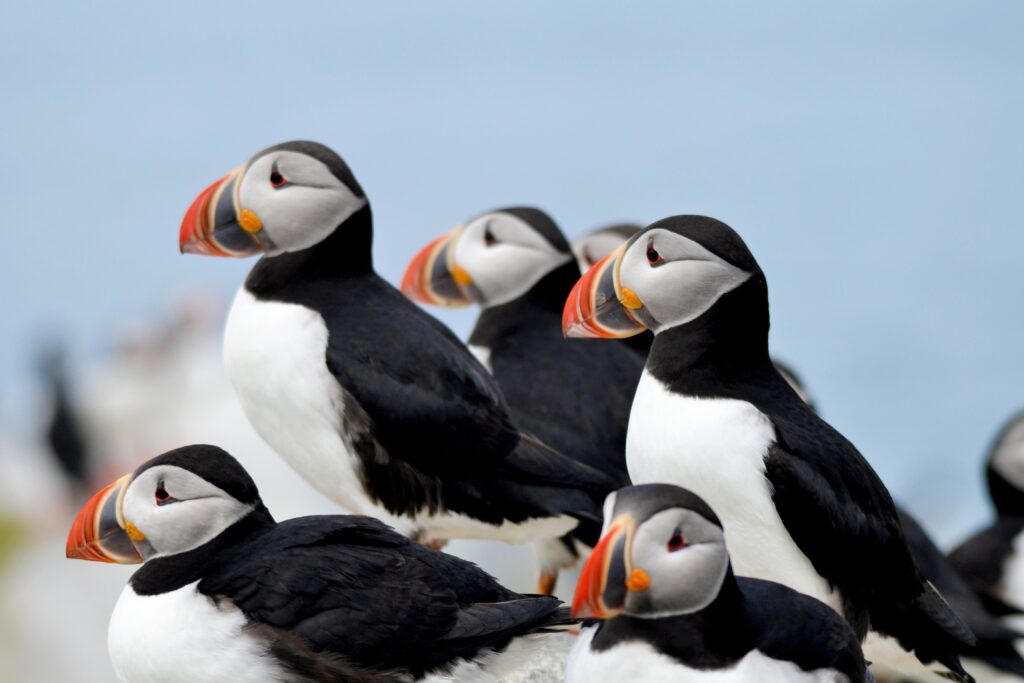
Atlantic puffins migrate across the North Atlantic, breeding on coastal cliffs and islands. Persistent climate change and overfishing has started to deplete their primary food sources, such as sand eels and herring, and the ocean warming alters marine ecosystems, which further threatens their survival.
23. African Elephants
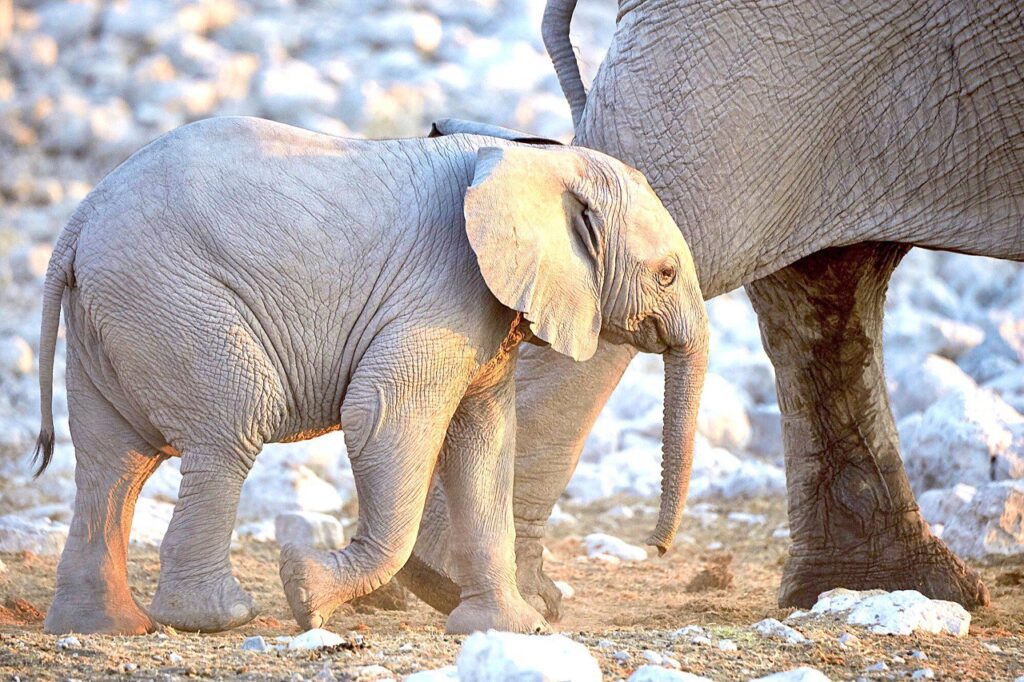
Elephants migrate to find food and water sources, but face threats like poaching and habitat fragmentation, which can disrupt their migration patterns and endanger their populations. Poaching, particularly for ivory, significantly reduces elephant populations. Also, Habitat fragmentation, caused by human activities like agriculture and development, breaks up their natural habitats, isolating herds and making it harder for them to find food and water.
24. Whooping Cranes
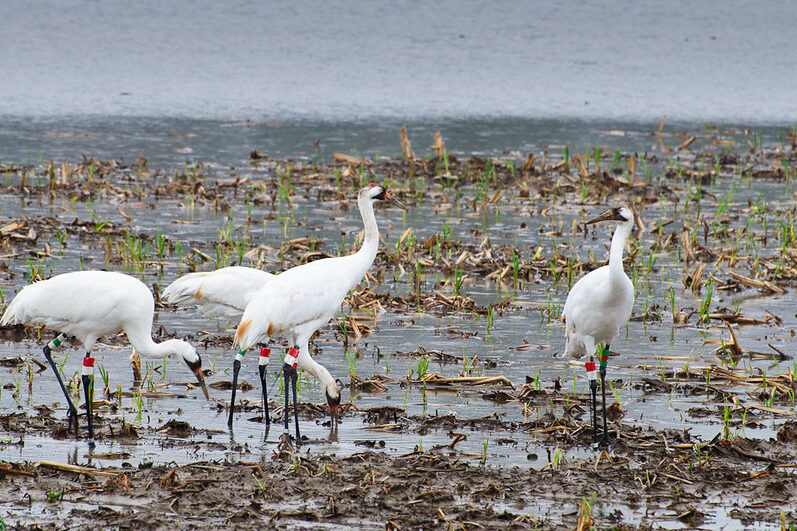
Whooping cranes migrate across North America, but face significant threats from habitat loss and human disturbance along their migratory route. With other dangers including collisions with power lines, poaching, and habitat fragmentation, these has altogether impacted their survival and population numbers.
25. Arctic Char
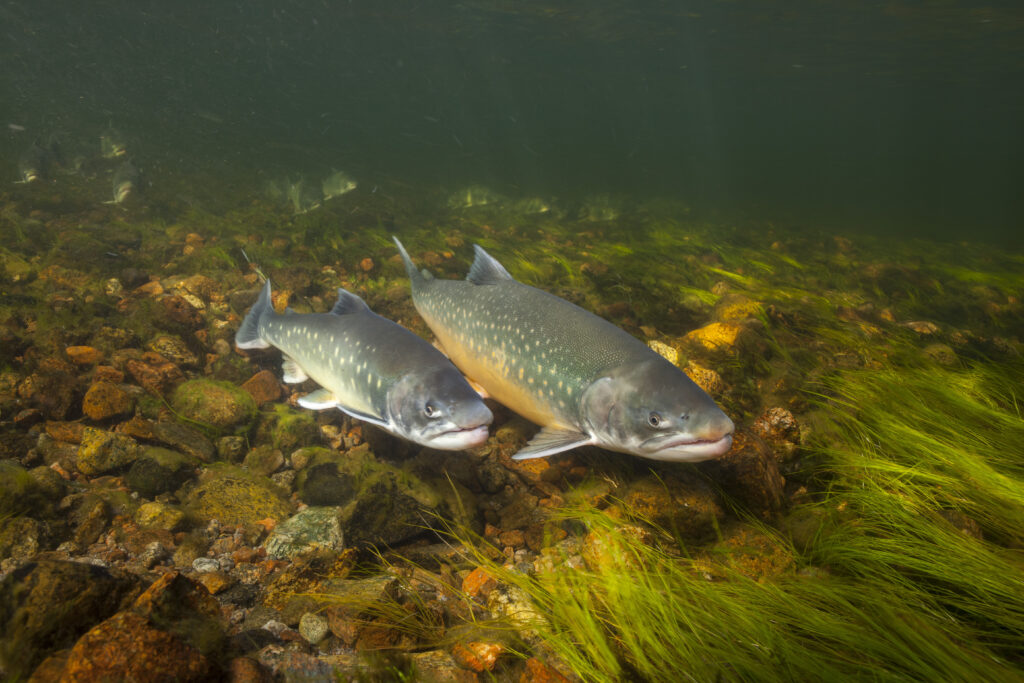
Arctic char are a type of salmon that often migrate to the ocean during the summer to feed, and sea ice conditions play a crucial role in their migration. As sea ice seasons shorten due to warming, char may be migrating to the ocean earlier and staying longer to feed, potentially impacting their spawning and overwintering behavior.
26. Greater Flamingos
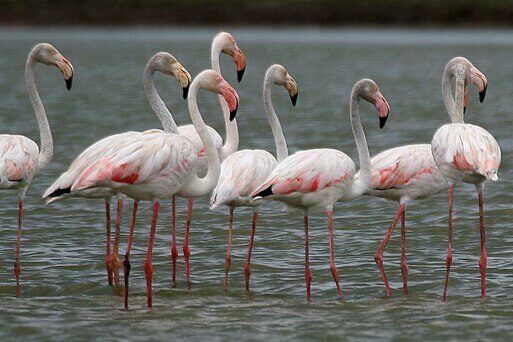
Flamingos are highly dependent on specific water conditions, including water depth, salinity, and the presence of suitable prey (e.g., algae, invertebrates). They migrate to find areas where these conditions are optimal for breeding and feeding.
27. Northern Elephant Seals
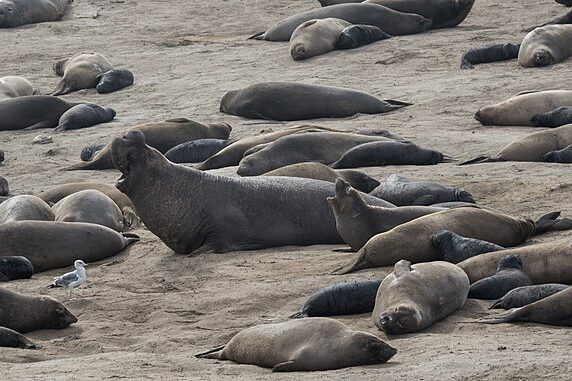
Northern elephant seals have one of the longest migrations of any mammal, with some individuals traveling over 13,000 miles roundtrip. They breed and give birth on islands off California and Mexico, while males primarily feed near the Aleutian Islands and in the Gulf of Alaska, and females feed further south. Changes in ocean currents and sea ice can impact their feeding grounds and breeding success. While Increased human activity, particularly around breeding colonies, can disrupt their behavior and cause them stress, leading to a decline in population.
28. American Eels
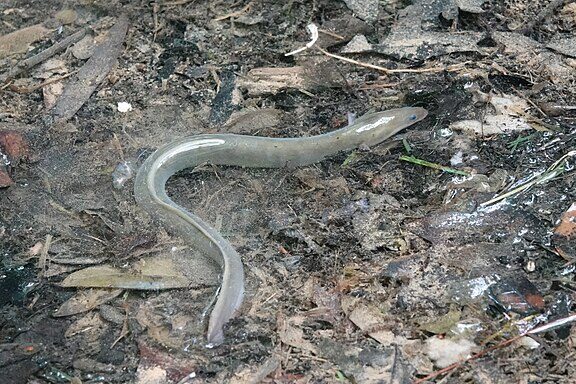
American eels are catadromous, meaning they spend their lives in freshwater but migrate to the ocean to spawn. The Sargasso Sea, a region in the Atlantic Ocean, is their spawning ground. Dams, particularly those built for hydropower, block both upstream and downstream eel migrations. This can prevent juvenile eels from reaching suitable freshwater habitats and hinder adults from returning to the sea to spawn. Pollution can also contaminate freshwater habitats, making them unsuitable for eels, altogether affecting their migration, survival, and reproductive success.
29. Swainson’s Hawks
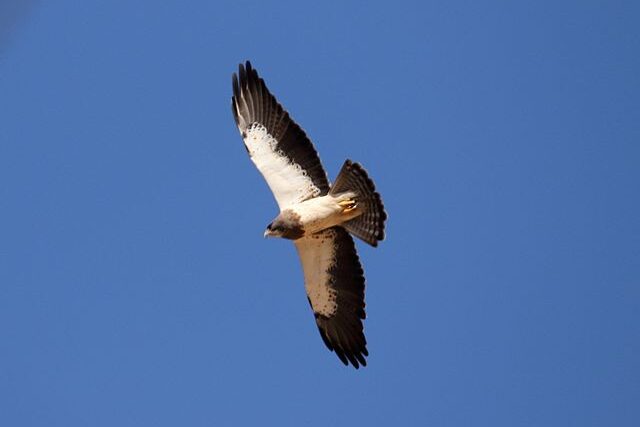
Swainson’s Hawks embark on a long-distance migration, traveling thousands of miles from their breeding grounds in North America to their wintering grounds in Argentina. The reduction of grasslands, which are vital for nesting and foraging, is a major concern for Swainson’s Hawks. They are also susceptible to pesticide poisoning, especially on their wintering grounds, due to their reliance on agricultural habitats and their consumption of prey that may have been poisoned by pesticides.
30. European Starlings
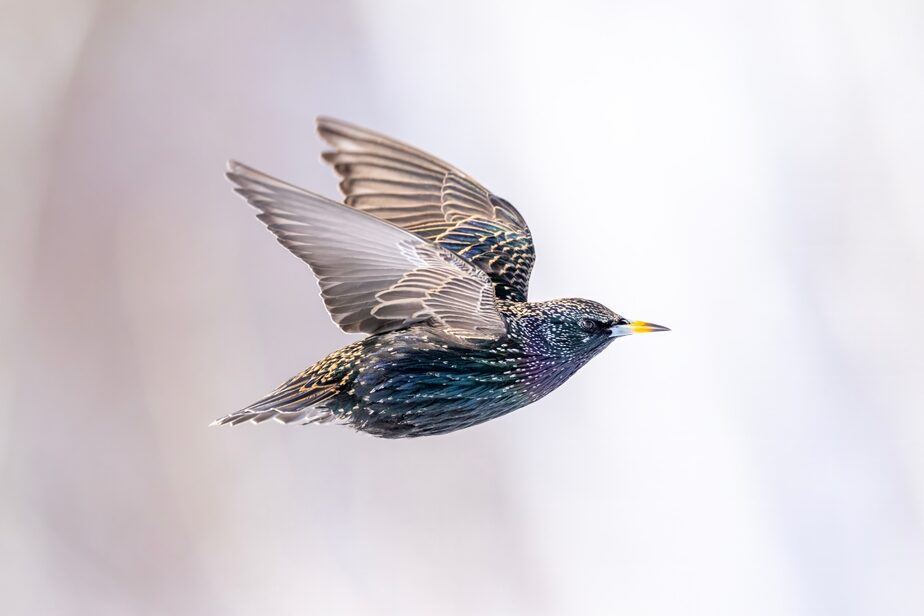
European Starlings are known for their migration patterns, often congregating in large flocks, especially in the fall and early spring. Changes in agricultural practices, like intensification, lead to declines in food availability and, consequently, affect Starling populations while Rising temperatures, altered precipitation patterns, and changes in the availability of resources along migration routes altogether impact Starling migration and surviva
31. Sooty Shearwaters
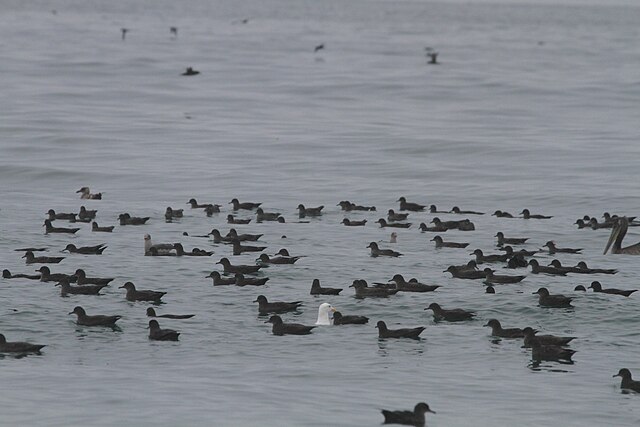
Sooty shearwaters are a type of pelagic seabird that undertake extensive migrations, traveling thousands of miles between breeding grounds in the Southern Hemisphere and feeding areas in the North. These migratory patterns make them vulnerable to changes in ocean conditions and food availability across different regions causing numerous threats to their survival, particularly from overfishing and climate change. Sooty Shearwaters also face threats from bycatch in fishing nets, habitat loss, and pollution.
32. Antelope
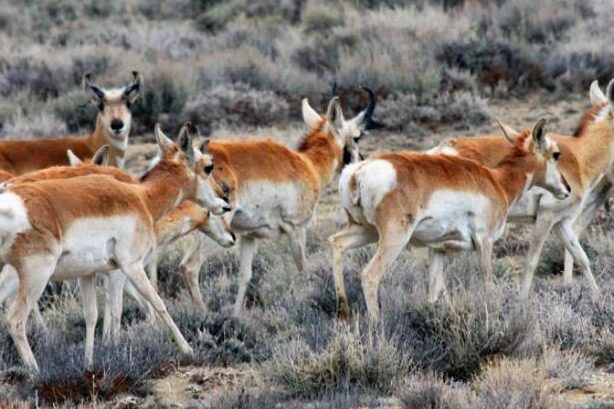
Antelopes, particularly migratory species, are further impacted by habitat loss as they need to travel between different areas to find food and water. The fragmentation of habitats can disrupt these migration routes, making it difficult for them to reach essential resources. Antelopes are also often targeted for their meat,and horns. Poaching efforts can deplete populations rapidly, especially in areas with high human activity. Additionally, habitat loss reduces their available living space, leading to population declines and increased competition for resources.
33. Black-necked Cranes
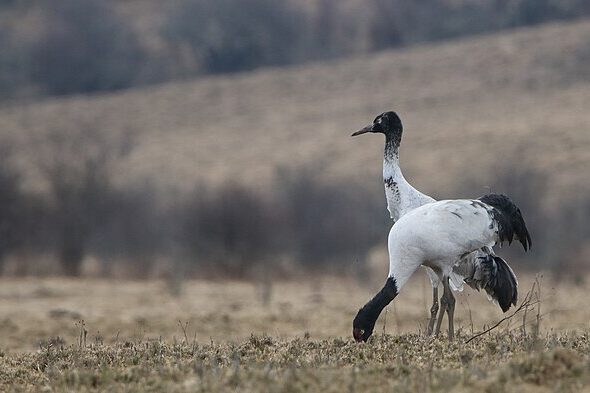
Black-necked cranes, known for their migrations across the Himalayas, face several threats. Their wetland habitat is facing increasing pollution, shrinking freshwater sources, and unsustainable development, putting them under tremendous pressure. Also, the construction of tourism infrastructure and dams, as well as melting glaciers due to climate change, pose significant challenges to the species. Black-necked cranes are also vulnerable to poaching, which further threatens their population.
34. Atlantic Herring

Atlantic Herring are known for their large schooling behavior and long migrations, traveling between spawning grounds and feeding areas. Overfishing has been a major factor in the decline of some herring populations. There is also the climate change impact, particularly rising water temperatures, which negatively impact various stages of the herring’s life cycle, including spawning, larval development, and overall productivity.
35. Egyptian Vultures
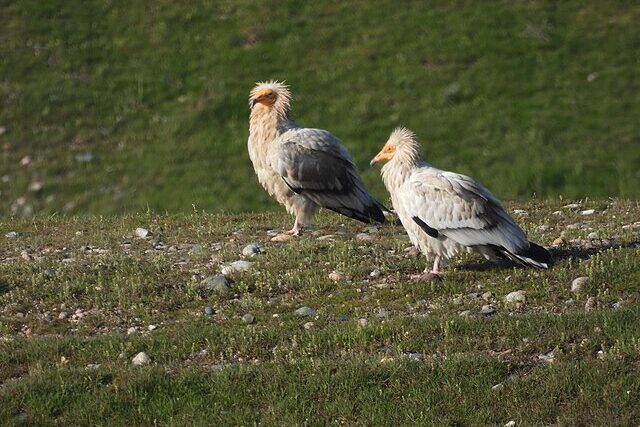
Egyptian vultures face significant threats during their transcontinental migration, including poisoning from various sources and habitat loss due to urbanization and agriculture. Poisoning is a major concern, particularly from livestock farmers using poison bait to target predators. Habitat loss and degradation also threaten nesting and feeding areas.
36. Arctic Wolves
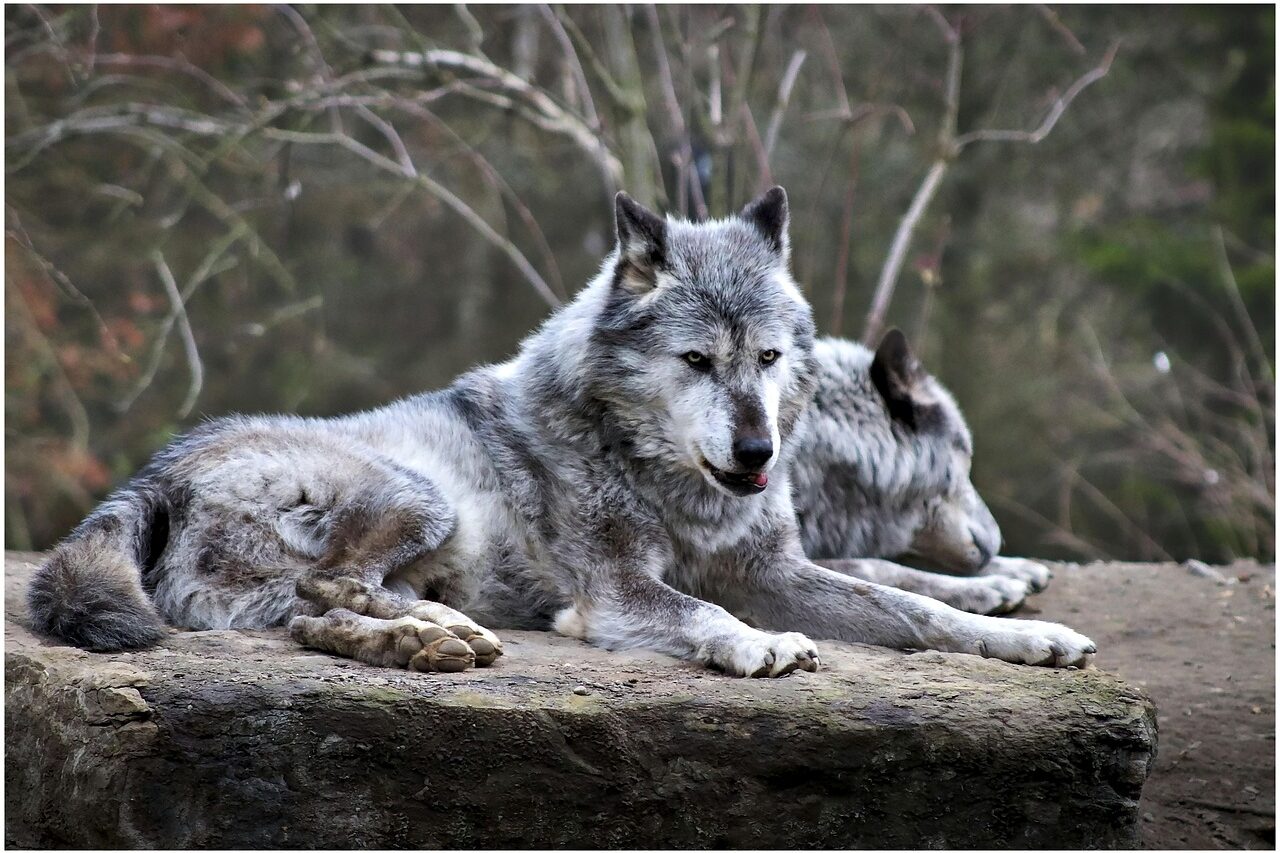
Arctic wolves are pack migrants that rely on a variety of prey like musk ox, caribou, and hares. Climate change is altering prey availability, forcing wolves to adapt and potentially expand their hunting ranges. This disruption of prey availability, particularly in the face of changing migration patterns and reduced prey populations due to extreme weather, impacts wolf survival and population dynamics.
37. Bearded Pigs
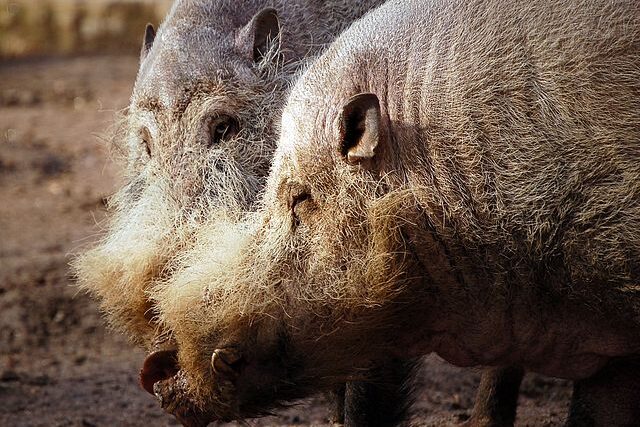
Bearded pigs are unique among wild pigs in their migratory behavior. They undertake seasonal migrations, often following established routes, and sometimes covering distances of 30 to 600 km, and these migrations are influenced by mass fruiting events in the forest. The expansion of palm oil plantations, logging, and other agricultural activities is rapidly destroying bearded pig habitats. This deforestation not only reduces their food sources but also fragments the connected landscapes needed for their migrations.
38. Narwhals
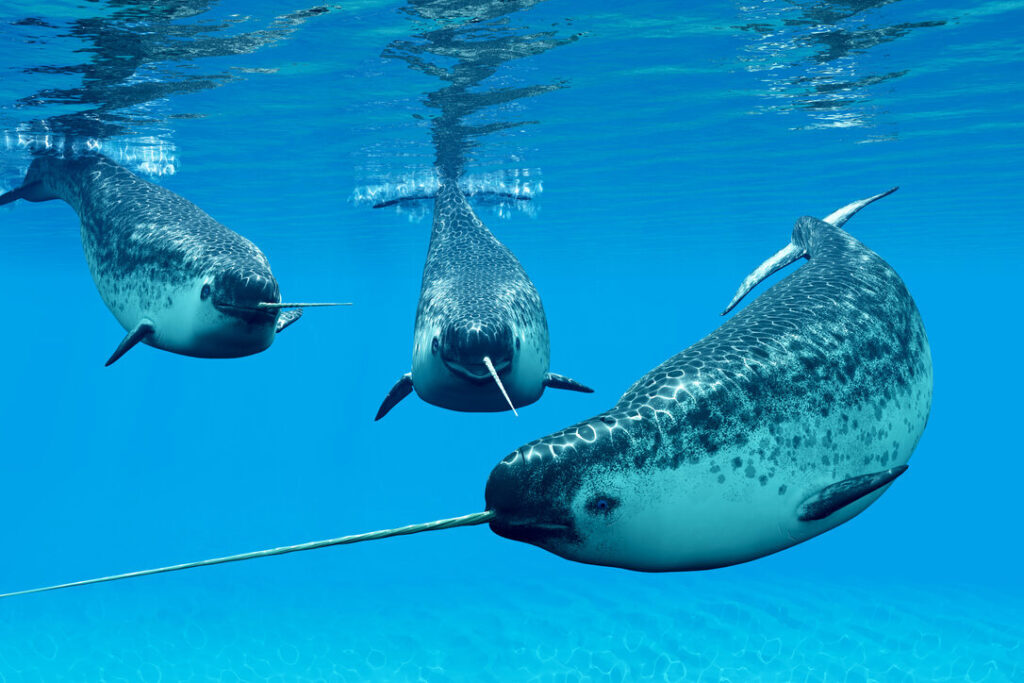
Narwhals, also known as “tusked ice whales,” are highly vulnerable to climate change and increased shipping traffic in the Arctic during their migration in Arctic waters. Also, their reliance on sea ice for habitat and breathing makes them susceptible to changing ice conditions caused by climate change. Additionally, the increased noise pollution from ships can disrupt their communication, navigation, and other vital behaviors.
Join us in the movement to protect these incredible migrations, by sharing your thoughts in the comments, you can support conservation efforts, advocate for sustainable practices, and spread awareness about these affected animal journeys.


